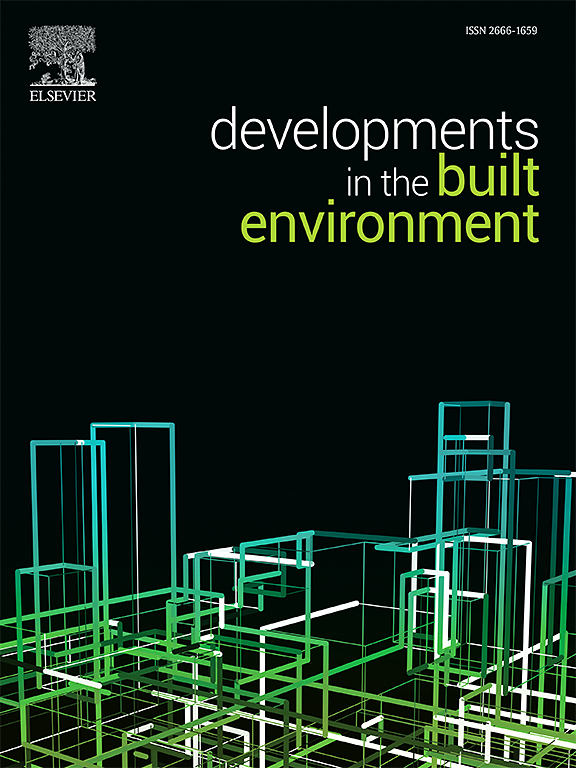Enhancing hysteretic behavior in rubberized reinforced concrete beams through a pre-mixing technique
IF 6.2
2区 工程技术
Q1 CONSTRUCTION & BUILDING TECHNOLOGY
引用次数: 0
Abstract
Recycled rubber presents a promising approach to enhancing the seismic performance of reinforced concrete (RC) structures and promoting sustainability. Incorporating rubber into the concrete matrix can help address the environmental issue of waste tire disposal while improving conventional concrete's ductility and energy absorption. However, increasing rubber content can paradoxically reduce energy absorption. Therefore, achieving optimal bonding between rubber and cement is crucial to maximizing the benefits of rubberized concrete (RuC). This study aims to overcome these challenges by exploring the potential of a pre-mixing technique to improve the overall seismic performance of RuC structures. To this end, the study investigates the cyclic flexural response of RC beams containing 15% rubber content, focusing on a novel pre-mixing technique designed to enhance rubber-cement bonding. Mechanical experiments were conducted on specimens, including conventional concrete (CC), unmodified RuC, and pre-mixed RuC. The study analyzes the impact of rubber content and pre-mixing on the energy absorption and ductility of the flexural hinge, evaluating factors such as pinching behavior and stiffness degradation. Results demonstrate that, to achieve 70% of their ultimate strength after peak load, pre-mixed beams exhibit a 235% higher cumulative energy absorption compared to both CC and unmodified RuC beams. Notably, pre-mixed beams exhibited significantly less pinching behavior and experienced a substantial reduction in both strength and stiffness degradation (52% and 30%, respectively) during successive cycles compared to unmodified rubberized beams. Further studies are recommended to investigate the effects of mixing composition on optimizing performance.
通过预搅拌技术提高橡胶钢筋混凝土梁的滞回性能
再生橡胶是提高钢筋混凝土(RC)结构抗震性能和促进可持续发展的一种很有前途的方法。在混凝土基体中掺入橡胶有助于解决废旧轮胎处理的环境问题,同时提高常规混凝土的延展性和能量吸收性。然而,增加橡胶含量反而会减少能量吸收。因此,实现橡胶和水泥之间的最佳粘合对于最大化橡胶混凝土(RuC)的效益至关重要。本研究旨在通过探索预混合技术的潜力来改善RuC结构的整体抗震性能,从而克服这些挑战。为此,本研究研究了含橡胶量15%的RC梁的循环弯曲响应,重点研究了一种旨在增强橡胶-水泥粘合的新型预搅拌技术。对常规混凝土(CC)、未改性混凝土(RuC)和预拌混凝土(RuC)进行力学试验。研究分析了橡胶掺量和预混炼对柔性铰链吸能和延性的影响,评价了夹紧性能和刚度退化等因素。结果表明,为了达到峰值荷载后70%的极限强度,与CC和未改性RuC梁相比,预混合梁的累积能量吸收提高了235%。值得注意的是,与未改性的橡胶梁相比,在连续的循环中,预混合梁表现出明显更少的挤压行为,并且强度和刚度退化都大幅降低(分别为52%和30%)。建议进一步研究混合成分对优化性能的影响。
本文章由计算机程序翻译,如有差异,请以英文原文为准。
求助全文
约1分钟内获得全文
求助全文
来源期刊

Developments in the Built Environment
Multiple-
CiteScore
7.40
自引率
1.20%
发文量
31
审稿时长
22 days
期刊介绍:
Developments in the Built Environment (DIBE) is a recently established peer-reviewed gold open access journal, ensuring that all accepted articles are permanently and freely accessible. Focused on civil engineering and the built environment, DIBE publishes original papers and short communications. Encompassing topics such as construction materials and building sustainability, the journal adopts a holistic approach with the aim of benefiting the community.
 求助内容:
求助内容: 应助结果提醒方式:
应助结果提醒方式:


